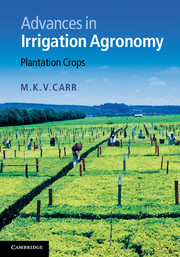4 - Coconut
Published online by Cambridge University Press: 05 May 2012
Summary
Introduction
The coconut (Cocos nucifera L.) contributes to the livelihoods of millions of people in the developing world, not only through its production but also through employment generated by the many associated industries. It is the most wide-spread, economically useful palm of the wet tropics, being found mainly in coastal areas between latitudes 20° N and 20° S of the equator.
Although there still remains some uncertainty about the coconut's centre of origin (it may be South America), it is generally accepted that the coconut originated in the south-west Pacific or the Indian Ocean and that it became domesticated in Malaysia and on the coasts and islands between South-east Asia and the western Pacific. It has been present in the Pacific islands (a centre of genetic diversity) for millions of years, long before their settlement by Polynesians, where it is an indigenous species. It is believed that coconut was distributed widely by nuts floating in ocean currents and germinating after they were washed ashore in new locations. In this way it probably reached southern India and Sri Lanka, where the coconut has a recorded history of 2000–3000 years, and possibly Madagascar and eastern Africa. The nuts were probably also carried by humans as a source of food and drink on long sea voyages, reaching West Africa and the Americas about 500 years ago when the coconut became pantropical (Purseglove, 1972; Harries, 1978, 1995; Persley, 1992).
- Type
- Chapter
- Information
- Advances in Irrigation AgronomyPlantation Crops, pp. 76 - 104Publisher: Cambridge University PressPrint publication year: 2012

